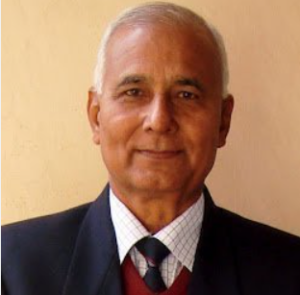(Special on Buddha Poornima)
SR Darapuri I.P.S.(Retd)

(Asian independent) The conversion of Dalits to Buddhism under Dr. B.R. Ambedkar’s guidance, culminating in the mass conversion event on October 14, 1956, in Nagpur, was a pivotal moment in their emancipation. This movement, often called the Ambedkarite or Neo-Buddhist movement, offered Dalits a pathway to break free from the oppressive caste system entrenched in Hinduism, providing social, psychological, and cultural liberation. Here is how it contributed to their emancipation:
- Rejection of Caste-Based Oppression
Hinduism, as Ambedkar saw it, institutionally sanctioned untouchability and caste hierarchy through scriptures like the Manusmriti. By converting to Buddhism—a religion he viewed as egalitarian, rational, and devoid of caste—Dalits could reject the theological basis of their subjugation. This act of conversion was a symbolic and practical renunciation of a system that deemed them “impure,” empowering them to redefine their identity outside the Hindu fold.
- Restoration of Dignity and Self-Respect
Ambedkar emphasized that emancipation was not just about material upliftment but also dignity. Buddhism, with its focus on equality (all beings can attain enlightenment) and ethical living, gave Dalits a new sense of self-worth. The 22 vows he administered during the conversion—such as rejecting Hindu gods and rituals—were a deliberate assertion of agency, encouraging Dalits to shed the internalized inferiority imposed by centuries of discrimination.
- Cultural and Social Alternative
Conversion provided Dalits with a distinct cultural identity rooted in Buddhist values like compassion, wisdom, and community (Sangha). This countered the exclusion they faced in Hindu society, where they were barred from temples and social spaces. By embracing Buddhism, they built their own communities, rituals, and spaces—like viharas—fostering solidarity and pride. Over time, this created a subculture that challenged the dominance of upper-caste norms.
- Political Consciousness and Mobilization
The conversion movement was not just spiritual; it was deeply political. Ambedkar framed it as a revolt against caste tyranny, galvanizing Dalits into a collective force. This heightened their political awareness and strengthened their resolve to demand rights and representation. The Neo-Buddhist identity became a rallying point for Dalit activism, reinforcing Ambedkar’s broader efforts through organizations like the Scheduled Castes Federation.
- Education and Empowerment
Ambedkar saw Buddhism as a rational, scientific faith that encouraged inquiry and education—key tools for Dalit upliftment. By embracing it, many Dalits were inspired to pursue learning, as Ambedkar himself had urged (“Educate, Agitate, Organize”). This shift helped break the cycle of illiteracy and poverty that caste had perpetuated, enabling social mobility.
- Long-Term Impact on Caste Dynamics
The mass conversion—initially involving over 500,000 Dalits and growing to millions in subsequent decades—sent a powerful message to Indian society. It pressured the state and upper castes to confront the injustices of untouchability, accelerating reforms and the implementation of constitutional safeguards. It also inspired future generations of Dalits to resist caste oppression, whether through Buddhism or other means.
Practical Outcomes
In Maharashtra, where the movement took root most strongly, Neo-Buddhists (often from the Mahar caste, Ambedkar’s own community) saw gradual improvements in education, employment, and political participation, aided by reservations and their newfound assertiveness. While not all socio-economic woes were erased—poverty and discrimination persisted—the conversion gave Dalits a framework to challenge their marginalization more effectively.
In summary, Ambedkar’s leadership in converting Dalits to Buddhism was a radical act of emancipation, offering them a spiritual escape from caste, a platform for self-assertion, and a tool for long-term empowerment. It did not end all their struggles, but it planted the seeds for a sustained fight against inequality, reshaping their place in Indian society.








